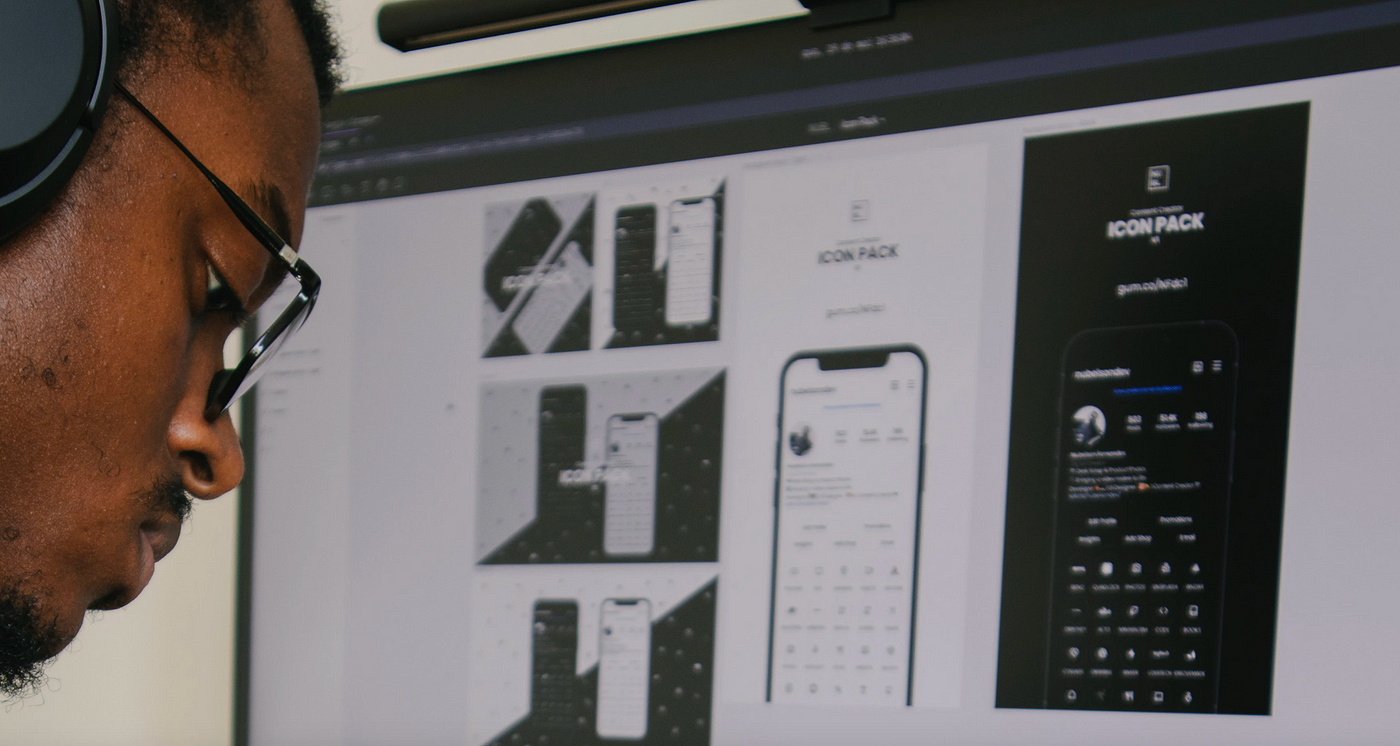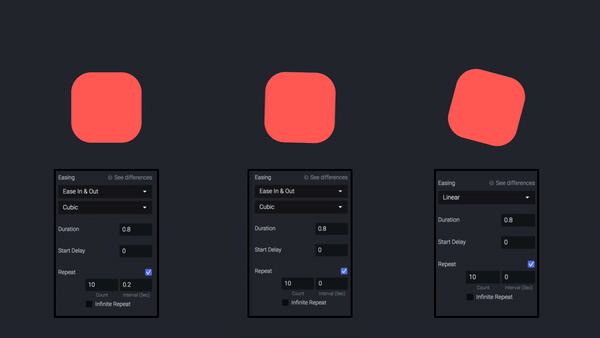

How to Become a UX Designer in 2022
source link: https://uxplanet.org/how-to-become-a-ux-designer-in-2022-e81faf51c5db
Go to the source link to view the article. You can view the picture content, updated content and better typesetting reading experience. If the link is broken, please click the button below to view the snapshot at that time.

Image by Unsplash
How to Become a UX Designer in 2022
If you’re considering moving into UX design, now is the perfect time to do it. Despite the turbulence the market is experiencing, there are high chances the tech industry will create many opportunities for creative people. A crisis always creates new opportunities for growth.
Here is a 7-step guide on how to join the UX design field.
1. Understand what exactly you want to do in UX design field
The first thing you need to do is understand the various disciplines in UX design. When you start diving into the subject, you will likely see popular titles such as “UX researcher,” “UI designer,” “UX writer,” and “UX strategist.” You need to understand what precisely each role is responsible for. I recommend reading the job description for each position on sites like indeed.com because they describe both roles and responsibilities.

UX Writer job description at Chase UK. Image by indeed
It can be the right idea to choose a UX role where you have more transferable skills. For example, if you have worked with people and mastered the skills like user interviews and market analysis, you can be a good candidate for the UX researcher role.
2. Learn the foundational principles of good design
Foundational things work for all disciplines in the field. A few foundational things apply to any role in UX design: desing thinking, user-centric design principles, and inclusive design. If you’re new to UX design, I highly recommend reading as much as you can about UX design. The more information you read, the better understanding you will have and the better career decisions you will make.
There are a few books that can help you with that:
Don't Make Me Think, Revisited: A Common Sense Approach to Web Usability (Voices That Matter)
Buy Don't Make Me Think, Revisited: A Common Sense Approach to Web Usability (Voices That Matter) 3 by Krug, Steve…
The Design of Everyday Things, revised and expanded edition (The MIT Press)
Even the smartest among us can feel inept as we try to figure out the shower control in a hotel or attempt to navigate…
100 Things Every Designer Needs to Know About People (Voices That Matter)
Buy 100 Things Every Designer Needs to Know About People (Voices That Matter) 1 by Weinschenk, Susan (ISBN…
Lean UX, 2e: Designing Great Products With Agile Teams
Lean UX has become the preferred approach to interaction design, tailor-made for today's agile teams. In the second…
And here a few popular online resources with excellent articles:
Nielsen Norman Group: UX Training, Consulting, & Research
NN/g principals pioneered many of the UX research methods which have now become the standard best practices. Today we…
Learn UX Design
The games industry revenue ($183 Billion in 2021) and the player base have grown exponentially since the launch of…
Welcome to XD Ideas - Where Designers Go to Grow | Adobe XD Ideas
XD Ideas is a forum for unique insights and authentic points of view on the practice, business and impact of design…
3. Learn UX process and methods
Once you know what you want to do, you need to learn how to do it properly. You need to discover methods that you will use to achieve good results. Suppose you choose the role of UX researcher. In this case, you must master user interviews, field studies, card sorting, and usability testing.
Considering that in 2022 remote work is so common, you need to learn how to adapt methods to remote work. For example, you should use methods that will allow you to interview users remotely and collect valuable feedback online.
4. Master the tools of the trade
Learning the tools of the trade goes hand-in-hand with mastering essential UX methods. No matter what you want to do in the UX design space, it would help if you learned rapid prototyping. Most of the time, it’s hard to communicate a product idea in plain words. It’s much easier to create a mockup or prototype and show it to others.
Show, don’t tell
It doesn’t necessarily mean you must learn how to create pixel-perfect high-fidelity mocks. If you will be a UX researcher, it’s okay if you can design low or mid-fidelity mocks. Communication is the key idea of prototyping. You create a prototype to help other people better understand your idea.
Sketch, Figma, Adobe XD are excellent tools for creating prototypes. If you want to create a web prototype, I recommend using Webflow because it allows you to create an actual working website with which your users and stakeholders can interact.

Prototyping in Figma
Plus, it can be a good idea to make your prototype more alive and dynamic; animation can help you with that. Lottie & ProtoPie are two excellent tools for designing new animated effects and adding them to the product prototypes.

Creating simple animations in ProtoPie
5. Practice make perfect
The more time you invest in mastering methods & tools, the better UX practitioner you will become. The rule of ten thousand hours of practice works for any industry, and product design is no exception.
10,000 hours of practice will make you an expert
But finding a project to work on can be challenging, especially if you don’t have much experience. However, it doesn’t mean that it’s impossible. You can volunteer your design skills. Non-profit organizations will be happy if you help them with their projects. Skills-based volunteering is not only an excellent way to gain real-world experience, but it is also an excellent way to create a powerful network of contacts. donate:code and VolunteerMatch are great places to find suitable volunteering opportunities.
6. Learn how to gather feedback from users/stakeholders
It’s vital not only to build a product but also to validate it with your audience — gather insights from real users on how they interact with your design and turn them into product design decisions.
Collecting and analyzing feedback is integral to your success.
That’s why along with mastering hard skills (tools of the trade), you also need to master soft skills. You need to learn how to communicate with others, learn from them and gather valuable insights.
Communication is by far the most critical skill for UX practitioners.
It’s vital to be open-minded when it comes to analyzing user feedback. Many people believe that open-mindedness is something that we have right from the start of our career, but I think it’s a skill that we master as we work more in the desing field. If we genuinely want to create products that have a good user experience, we need to find areas where our product isn’t performing well for our users and redesign those areas.
7. Put a strong focus on building a portfolio
If you want to find a job in the UX field, you need to create a strong portfolio. Companies typically evaluate the experience of a UX candidate not by checking their CV but by studying their portfolio. Of course, creating a portfolio is not the most exciting activity. It’s more fun to design new products rather than explain what you did in the past. But it’s the only way to go if you want to get a job in the field. That’s why I recommend considering creating a portfolio as a project and completing it with care and attention to detail.
Remember that for each project you add to your portfolio, you must show more than just a final result. You need to tell a story explaining the process you followed, what you did right and what you did wrong, and how your audience reacted to your product. It will help create context so other people can understand the real impact of your work.
You tell your own story with your portfolio.
Want To Learn UX?
Try Interaction Design Foundation. It offers online design courses that cover the entire spectrum of UX design, from foundational to advanced level. As a UX Planet reader, you get 25% off your first year of membership with the IxDF.
Recommend
About Joyk
Aggregate valuable and interesting links.
Joyk means Joy of geeK